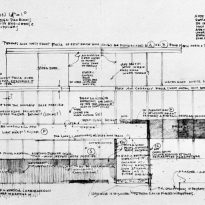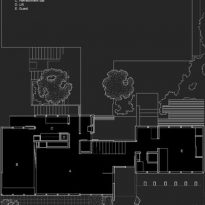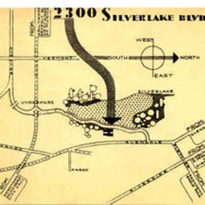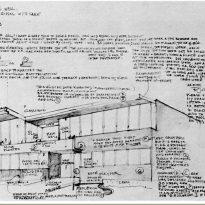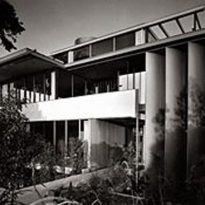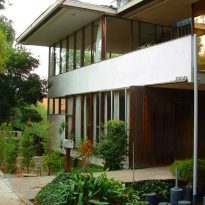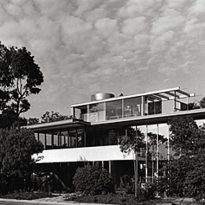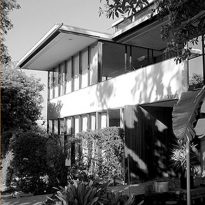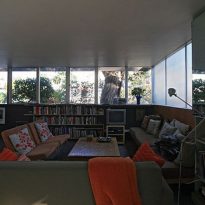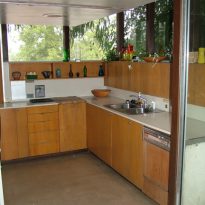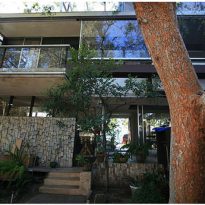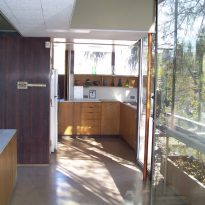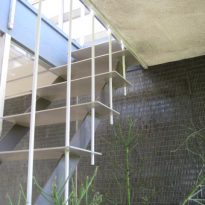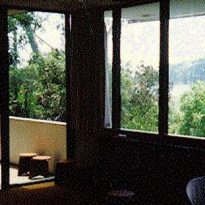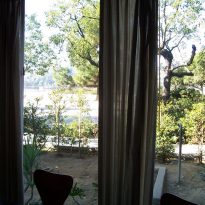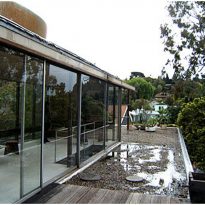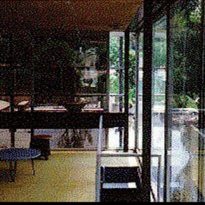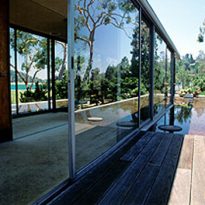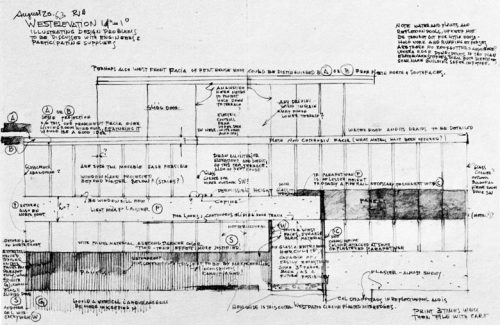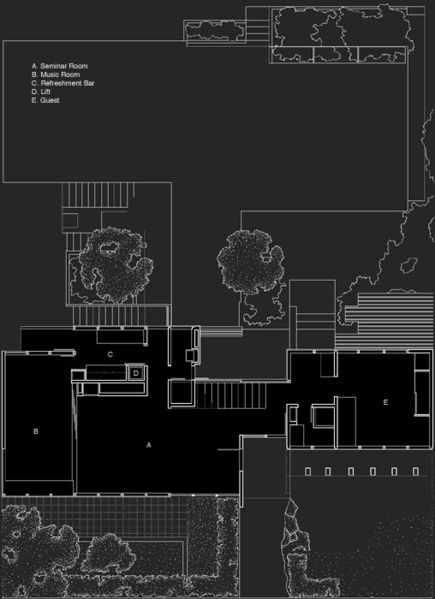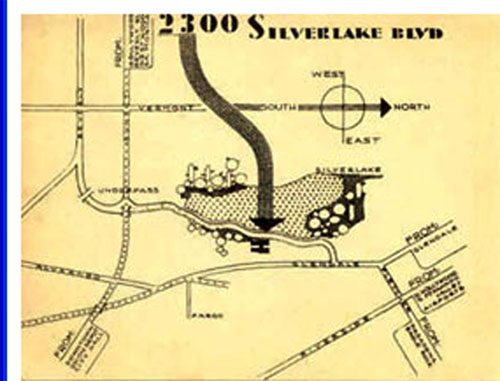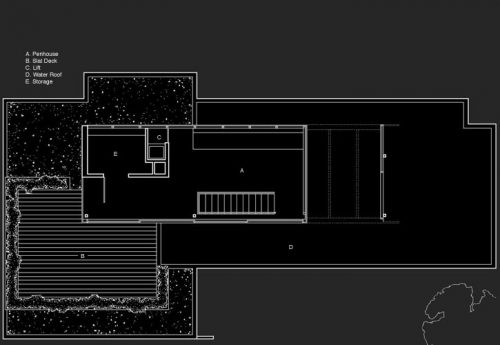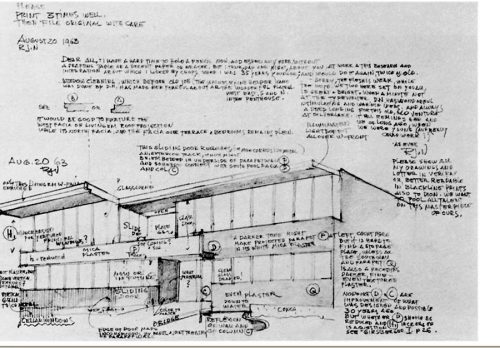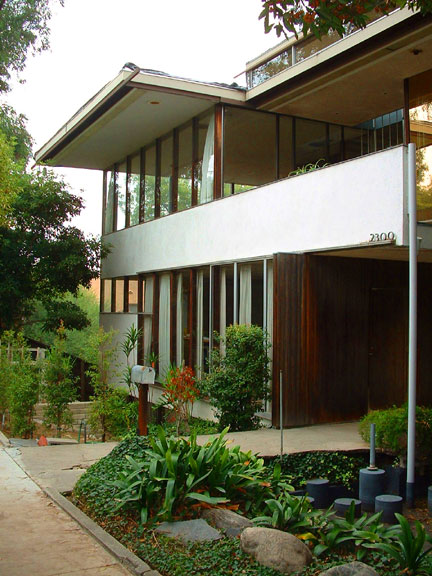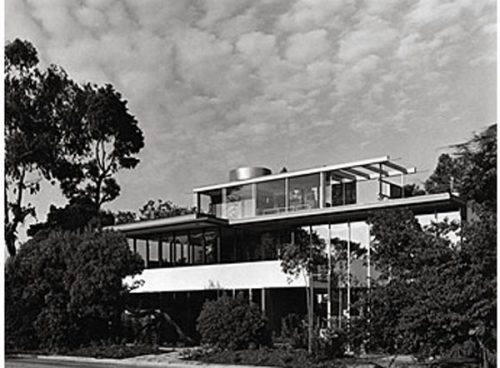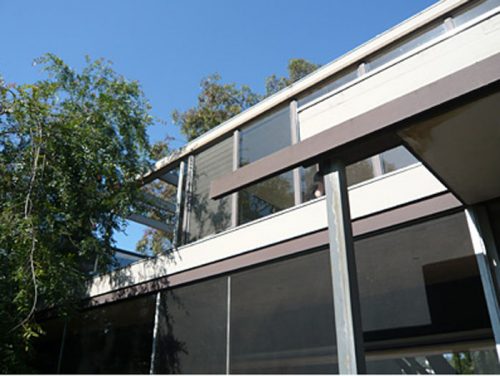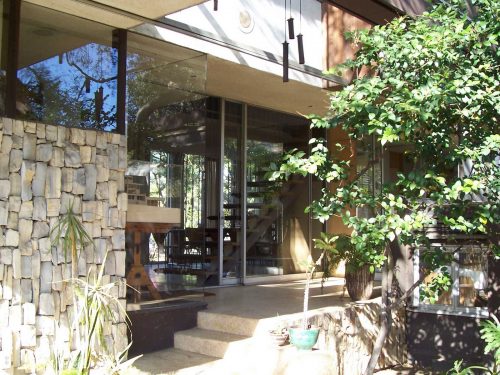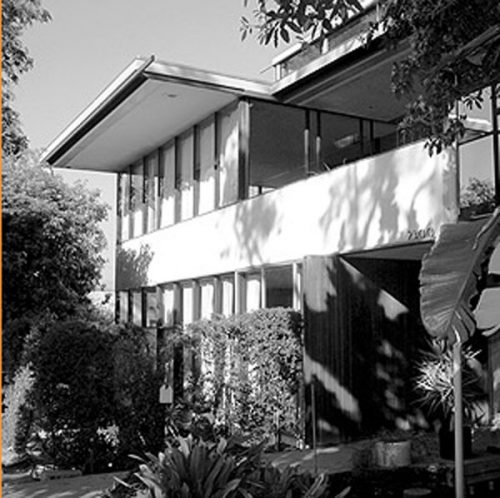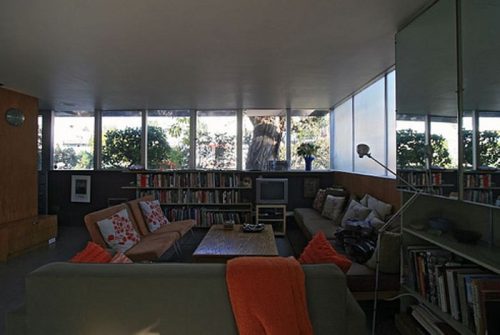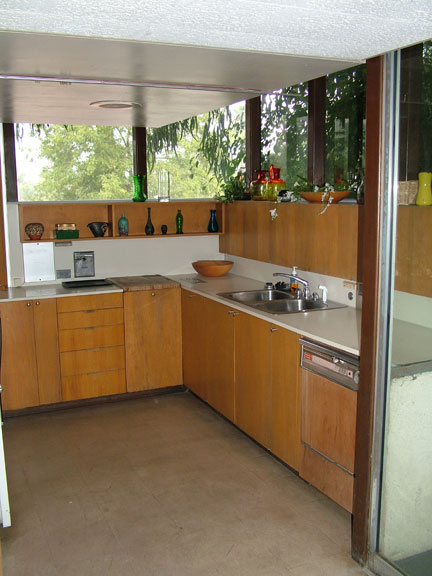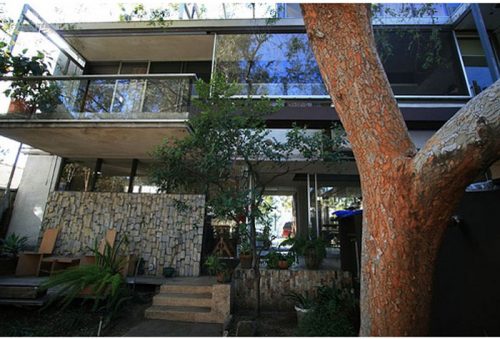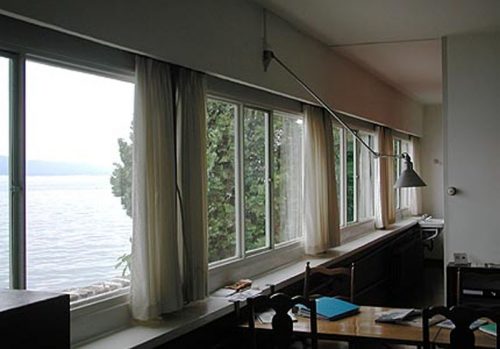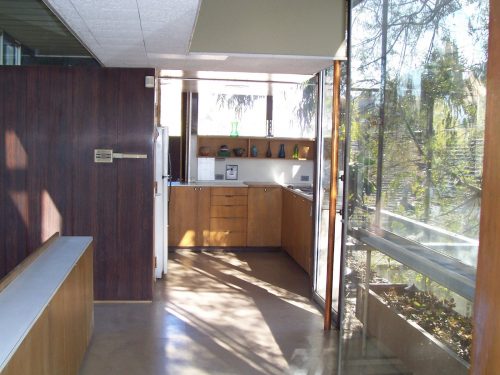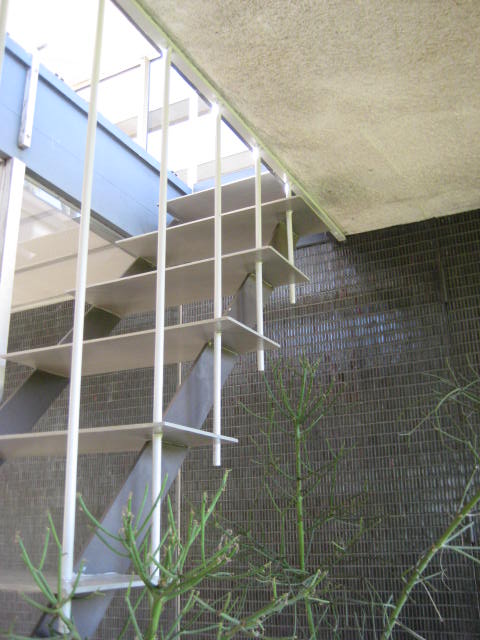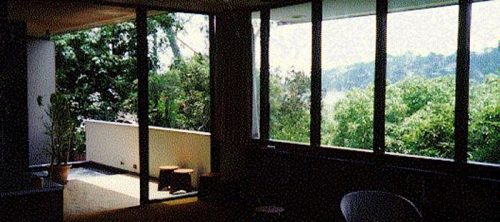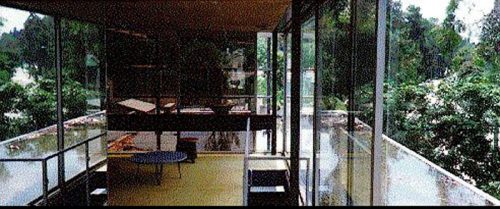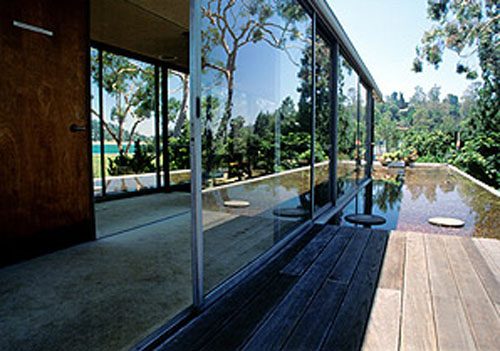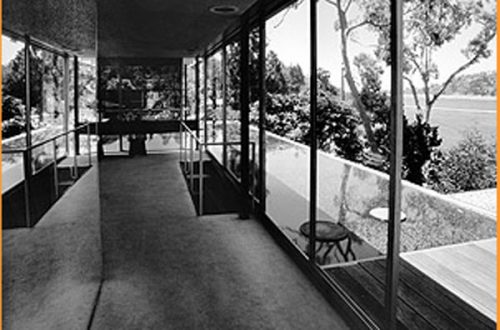VDL Research House II

Introduction
A fire caused by an electrical fault destroyed the first complex VDL Research House I, in 1963, losing in the fire drawings and files that had gathered for decades, was a blow to the family Neutra, but This re-build.
Richard Neutra and his son and partner Dion Neutra rebuilt the studio-residence and gave it its current fundamentals. The phoenix VDL II is more complex than its predecessor, more varied in sections and has less material “soft”. Although more transparent, it is also more introverted, that is, being more oriented inner garden to stroll through the streets. Raises more tricks illusion of space and the addition of balconies makes it more in a hut in a town house.
Los Angeles had grown. The road traffic, together with its pollution was just across the front door. After the fire, there were no trees to protect the strong sun from the west. The water reserve was reduced so that its presence was refreshing to 183 meters away.
The study was moved to the nearby office of Glendale. Dion designed much of the new building while Neutra and his wife were traveling through Europe, Richard Neutra had indications by telephone.
Rules
Here again Neutra father and son returned to bypass the regulations on the construction of buildings, arguing that it was not building a new plant, as the guest house and half of the old building had survived the fire, bringing more 50 per cent of the house had been standing.
Recognition
After the death of Richard Neutra in 1970, his wife continued to live in the house. In 1979 decided that the house would be for the University after his death so that it can be preserved for public use and study.
The importance of the house was recognized in 1999 when he was named “World Monument 2000” by the World Monument Watch Society. It is the only structure of an architect who still lives (Dion Neutra) awarded by this organization. Dion Neutra has remained active as a professional and has continued to work with Cal Poly Pomona to maintain the house and his legacy.
Situation
Like the first VDL complex, is located at 2300 E. Silverlake Boulevard, Los Angeles, California.
Silver Lake is a district east of Hollywood in Los Angeles, California, inhabited by a variety of ethnic and socioeconomic groups, known for its bohemian atmosphere and creative.
Concept
The interior and exterior, the inside-outside gives the impression of a view from where it connects with the landscape and water.
Spaces
The new design has replaced the solid walls of the staircase inside by glass walls flanking an Ladder open.
A window of 3 meters wide, located near the corner of the breakfast of the upper deck, slips completely up outside the building, which leads the trees and sky towards the interior, this was Dion’s response to the request for his mother to build a screened porch, and out of fashion.
The cuisine stands outside of the wall in the rear, at 91 centimeters, so that the hanging of birch cabinets do not reduce the light of day on the hob and also the housewife “is cloaked in vegetation.” Some panels folding housed above the hob favored a greater connection between the kitchen and lounge.
The presence of water is a precious component in the biorrealismo.
As the lake was now distant, the water is integrated into each of the three floors. The second floor was added to a pool patio outside, now devoid of its lánguidos leather sofas.
A staircase leads to new steel and glass penthouse. The metal box aspect of sailing, which hides the mechanical equipment, gives this facade is very different from the house, seen from the street. A row of 5cm of water surrounding the attic and creates a microclimate that allows you to enjoy the view of the mountains and the lake from the lower deck of Sequoia.
The bank, stayed around the small volume, is deliberately low, so to sit and contemplate the lake, the two water surfaces are based on a sea of silver.
Some changes
The first floor was opened to become the Institute Richard J. Neutra and the room where Dione offered his concerts.
Most of the windows of the west facade were replaced by glass fixed to avoid contamination and some were extended to the ground.
The study which was on the first floor was converted into a guest bedroom.
The kitchen became a bar to offer service to the main room with a balcony overlooking the patio, overlooking the north. Climbing the stairs of the new kitchen was enlarged a window module to the east and opened to the dining room with drawers on both sides.
The room where the articles were kept clean-up was eliminated just like the solid walls on the sides of the ladder
A balcony was added to the eastern part of the south bedroom and a large sliding glass wall was added to the breakfast room to be able to enjoy the open air. The windows were down along this side, and a bridge with a spiral staircase along the north courtyard replaced the original staircase. These changes on the east side of the house took the advantage of the maturity of the landscape construction refreshing patios in the rear.
The prefabricated folding doors to the bedrooms connected with the terraces were replaced with sliding glass.
The shade of the trees burned during the fire were replaced by automated vertical slats.
Due to extensive changes to roof level, ground floor and the eastern section, the Neutra family decided to keep the living room with the original taste of the first house to remember as it was before the fire.
Dion Neutra close supervision of the project to undertake an intensive study of the effects of new design elements. He studied the best height of the windows to display the threshold of changing them.
The use of reflective glass screens and mirrors extra wide spaces as small bedrooms, bathrooms and outdoor spaces. The water creates an environment that is reflective used at all levels.
A modern system of indirect lighting is placed on the cantilever, as well as highlighting the plant in bookstores. The lighting is controlled by a complex switching system.
Materials
In its construction, as in the original, was used concrete, steel and glass.
Formica panels, easy care, in rosewood, replaced the original masonite.
For windows in the bedrooms and bathrooms that gave the street were used golden glasses that reflected the heat.
Some blinds like the wings of an airplane and is operated electronically, rising from the pool curved at the entrance, thus providing protection against the strong sun of mid-afternoon.
In the interior, many mirrors above the height of the head not only lengthen the space but, in some cases, too disoriented to the observer.
The path of water surrounding the house also has a role to isolate the rooms.
In the house abound platforms Sequoia wood and furniture from the kitchen and materialized in birch.



